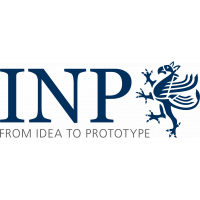The radiative heat transfer in arc plasma models is considered from the point of view of its description in terms of a net emission coefficient, the method of spherical harmonics in its lowest order, and the discrete ordinate method. Net emission coefficients are computed, applying approximate analytical and numerical approaches and a multi-band representation of the spectral absorption coefficient with three kinds of its averaging and two datasets. Self-consistent access to the radiative heat transfer is applied to a two-dimensional axisymmetric model of a free-burning arc in argon at atmospheric pressure. The results obtained from the models employing the net emission coefficient, the method of spherical harmonics, and the discrete ordinate method are compared. The dataset provided here supports results in the article [Baeva, M.; Cressault, Y.; Kloc, P., "Comparative Studies on the Radiative Heat Transfer in Arc Plasma and Its Impact in a Model of a Free-Burning Arc" 2024, 7, 631–650, https://doi.org/10.3390/plasma7030033]. In particular, the obtained approximate net emission coefficient and the net emission coefficient based on the P1-approach and the DOM for cylindrical isothermal plasma are provided.
| Field | Value |
|---|---|
| Group | |
| Authors | |
| Release Date | 2024-08-26 |
| Identifier | da9b8d93-cc51-4595-a417-35760bef6060 |
| Permanent Identifier (DOI) | |
| Permanent Identifier (URI) | |
| Is supplementing | |
| Plasma Source Name | |
| Plasma Source Application | |
| Plasma Source Specification | |
| Plasma Source Properties | The model of the free-burning arc in this work employs a tungsten-inert gas arrangement in a 2D axisymmetric computational domain. It includes a La-W cathode with a length of 20 mm, a radius of 2 mm, and a truncated 60° conical tip (a plateau radius of 0.2 mm). The anode is a water-cooled copper plate with a radius of 33 mm and a thickness of 7 mm. The distance between the cathode tip and the anode is 8 mm. The arc burns at a direct current of 100 A. |
| Plasma Medium Name | |
| Plasma Medium Properties | The arc burns in atmospheric-pressure argon. The gas is fed with a flow rate of 12 slm through a nozzle with an inner radius of 8 mm. |
| Plasma Diagnostics Name | |
| Plasma Diagnostics Properties | Simulations are performed applying the net emission coefficient 𝜀𝑁 (with R = 1 mm), the method of spherical harmonics (first order, P1), and the and discrete ordinate method (DOM). |
| Plasma Diagnostics Procedure | The net emission coefficient (NEC), method of spherical harmonics (P1 as the lowest order), and discrete ordinate method (DOM) methods are implemented into a 2D axisymmetric model of a free-burning arc. Each method requires the knowledge of the radiative properties of the plasma. In the framework of the arc model employing the NEC, the values of the NEC have to be computed prior to the simulation and provided as a function of the temperature. The arc models employing the P1 and the DOM methods make use of a mean absorption coefficient (Planck, Rosseland, hybrid) obtained as a function of the temperature for a number of frequency bands. |
| Language | English |
| License | |
| Public Access Level | Public |
| Contact Name | Margarita Baeva |
| Contact Email |
Data and Resources
- Comparative studies on the radiative heat transfer in arc plasma - Fig5a_DataI_IIcsv
The approximate net emission coefficient obtained for the spectral...
Preview Download - Comparative studies on the radiative heat transfer in arc plasma - Fig5b_DataI_IIcsv
The approximate net emission coefficient obtained for the spectral...
Preview Download - Comparative studies on the radiative heat transfer in arc plasma - Fig6a_KappaPRh_DataI_IIcsv
The net emission coefficient obtained by means of the P1 method for the mean...
Preview Download - Comparative studies on the radiative heat transfer in arc plasma - Fig6b_KappaPRh_DataI_IIcsv
The net emission coefficient obtained by means of the DOM for the mean...
Preview Download - Comparative studies on the radiative heat transfer in arc plasma - Fig10a_NEC_P1_DOM_DataI_IIcsv
Axial distribition of the plasma temperatute obtained from 2D simulations...
Preview Download - Comparative studies on the radiative heat transfer in arc plasma - Fig10b_NEC_P1_DOM_DataI_IIcsv
Axial distribition of the radiative heat source obtained from 2D simulations...
Preview Download - Comparative studies on the radiative heat transfer in arc plasma - Fig11a_NEC_P1_DOM_DataI_IIcsv
Distribution of the plasma temperature along a line at a distance of 1 mm...
Preview Download - Comparative studies on the radiative heat transfer in arc plasma - Fig11b_NEC_P1_DOM_DataI_IIcsv
Distribution of the radiative heat source along a line at a distance of 1 mm...
Preview Download - Comparative studies on the radiative heat transfer in arc plasma - Fig12_EqTerms_DataI_IIcsv
Axial distributions of the terms in the equation of energy concervation from...
Preview Download

![[Open Data]](https://assets.okfn.org/images/ok_buttons/od_80x15_blue.png)